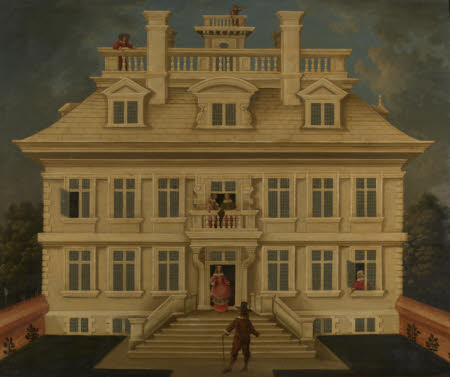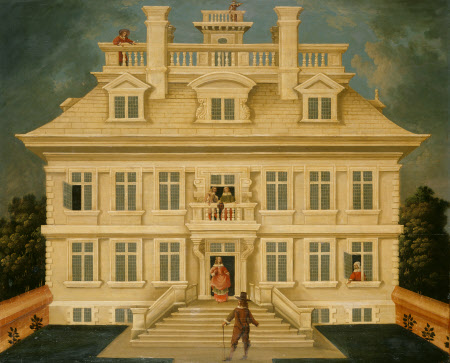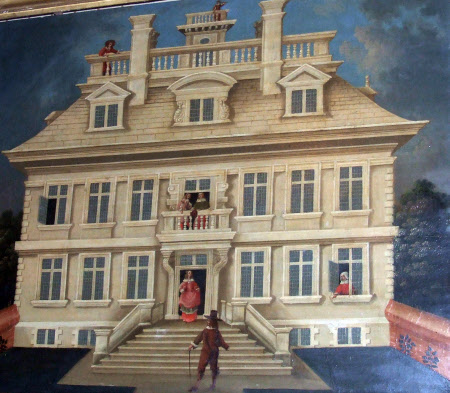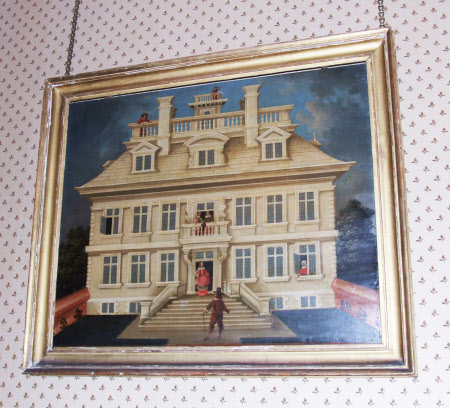Wisbech Castle
British (English) School
Category
Art / Oil paintings
Date
1800 - 1829
Materials
Oil on panel
Measurements
937 x 1142 mm
Place of origin
Wisbech
Order this imageCollection
Peckover House, Cambridgeshire
NT 781642
Summary
Oil painting on panel, Wisbech Castle, British (English) School, early 19th-century. Wisbech Castle as it appeared after it was built in about 1658 for John Thurloe, Secretary of State for Cromwell during the Commonwealth. The painting, which probably once formed part of the decoration of a panelled room, appears to be later, but shows the 17th-century house with figures in contemporary dress. Wisbech Hall, built circa 1658, is, Colvin suggests, by the same architect who built Thorpe Hall, Peter Mills. It has now been replaced by a Regency villa. Built in the precincts of the Norman Castle, the 17th-century house was owned by Cromwell's Secretary of State, John Thurloe.The inclusion of figures in dress intended to be contemporary with the house suggests an early 19th-century antiquarianising pastiche, rather than even an 18th-century picture. The shaped top may indicate that it was once an overmantel. It was probably painted as a memento, around the time of the house's demolition in 1816. This assessment of the picture may, however, be too damning. The painting of the foliage and of the red stone walls, and even of the house itself, do not seem incompatible with 17th-century handling (though the actual house is painted with greater impasto than one would expect). The figures, however, which have clearly been painted over the completed architecture, would in that case be later additions, to give life to what might once have been a purely architectural overmantel.
Provenance
On loan to the National Trust by the Diocese of Ely
Makers and roles
British (English) School, artist



